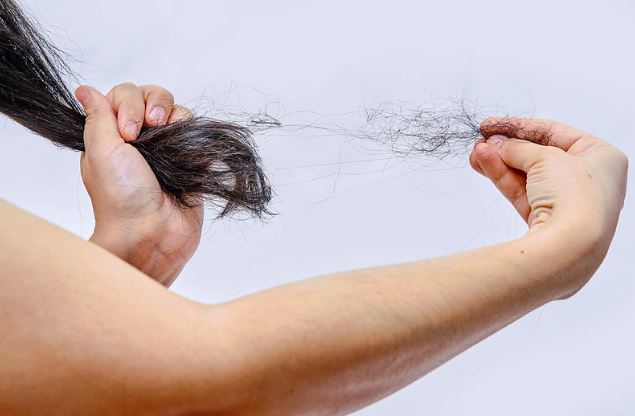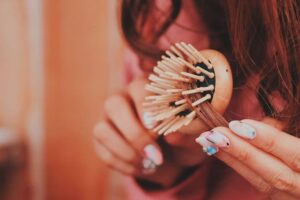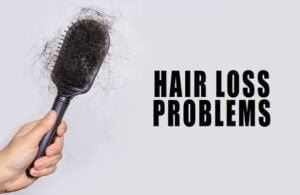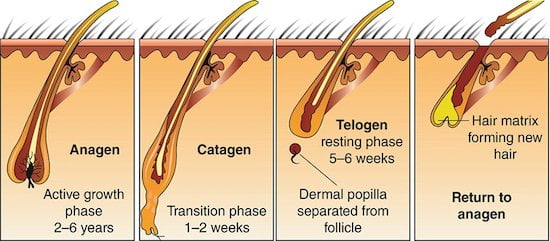Understanding Hair Fall: Causes, Symptoms, and Solutions
Hair loss is a common issue that many individuals experience at some stage of their lives. In this comprehensive guide, we will delve into the various factors that contribute to hair fall, the symptoms to watch out for, and effective solutions to tackle this issue.
Introduction to Hair Fall
Hair fall, scientifically known as “telogen effluvium,” is a natural part of the hair growth cycle. On average, it’s normal to lose about 50 to 100 hairs per day. However, when this natural shedding process escalates, it can lead to noticeable hair thinning and even baldness. Understanding the causes and addressing the symptoms is crucial for maintaining healthy locks.
Common Causes of Hair Fall
Poor Nutrition and Diet
A balanced diet plays a significant role in maintaining healthy hair. A deficiency in essential nutrients such as iron, biotin, zinc, and vitamins A and D can contribute to hair fall. Incorporating foods rich in these nutrients, such as leafy greens, eggs, nuts, and fatty fish, can promote hair growth and minimize shedding.
Stress and Lifestyle Factors
Chronic stress and an imbalanced lifestyle can disrupt the hair growth cycle, leading to increased hair fall. Stress triggers the body to enter a “fight or flight” mode, diverting resources away from non-essential functions like hair growth. Practicing stress-reduction techniques, regular exercise, and adequate sleep can help maintain a healthy hair cycle.
Hormonal Imbalances
Hormones play a crucial role in hair health. Conditions such as polycystic ovary syndrome (PCOS) and thyroid disorders can lead to hormonal imbalances that contribute to hair fall. Consulting a healthcare professional for hormonal assessments and appropriate treatments can help address this issue.
Excessive Styling and Heat Exposure
Frequent use of heat styling tools, tight hairstyles, and chemical treatments can damage the hair shaft and weaken the follicles. This damage can lead to increased hair breakage and fall. Opting for gentle hair care practices, using heat protectants, and giving your hair regular breaks from styling can prevent unnecessary shedding.
Recognizing Hair Fall Symptoms
Increased Hair on Pillows and Brushes
One of the first signs of excessive hair fall is finding more hair on your pillows, brushes, or shower drain than usual.
Thinning Hairline or Bald Patches
Visible thinning of the hairline or the emergence of small bald patches can indicate ongoing hair fall.
Widening Parting
If you notice that your hair’s parting is becoming wider than usual, it might be a sign of hair thinning.
Effective Solutions for Hair Fall
Revise Your Diet
Include nutrient-rich foods like spinach, eggs, and avocados in your diet to provide essential vitamins and minerals for healthy hair.
Manage Stress
Incorporate stress-reduction techniques such as yoga, meditation, and deep breathing exercises into your daily routine.
Choose Hair-Friendly Hairstyles
Opt for loose hairstyles that don’t put excessive strain on your hair shafts and follicles.
Avoid Excessive Heat Styling
Minimize the use of heat styling tools, and when you do use them, apply a heat protectant.
Consult a Professional
If your hair fall persists or worsens, consider consulting a dermatologist or trichologist for personalized advice and treatment options.
Myths and Facts About Hair Fall
Myth: Shampooing Causes Hair Fall
Fact: Shampooing is essential for maintaining a clean scalp and healthy hair. However, using harsh shampoos or washing your hair excessively can lead to dryness and breakage. Choose a mild shampoo and avoid over-washing.
Myth: Cutting Your Hair Promotes Growth
Fact: While regular haircuts prevent split ends and maintain hair health, they don’t directly influence hair growth at the scalp. Hair growth takes place within the follicles beneath the scalp.
Myth: Hair Fall Is Inevitable With Age
Fact: While some hair fall is natural with age, excessive hair fall is not a normal part of aging. It’s important to address the underlying causes to prevent and manage hair fall.
Professional Interventions
Platelet-Rich Plasma (PRP) Therapy
PRP therapy involves injecting your blood’s concentrated platelets into your scalp to stimulate hair follicle growth. This treatment can be effective for some individuals experiencing hair thinning.
Minoxidil Treatment
Minoxidil is an over-the-counter topical solution that can help promote hair growth. It’s commonly used to treat androgenetic alopecia (male and female pattern baldness).
Hair Transplantation
For individuals with severe hair loss, hair transplantation is an option. This procedure involves transplanting hair follicles from one part of your scalp to areas with thinning or no hair.
Follow the link read my other article on How To Win The Battle of Obesity
Conclusion
Dear friend, your hair’s journey to restoration is a reflection of your inner strength and resilience. Embrace these remedies as tokens of self-love, allowing them to heal not just your hair but also your heart. Remember, you are not defined by the strands you lose, but by the courage you show in seeking solutions and caring for yourself.






1 thought on “Hair Fall- Unleash Your Hair’s Potential: Mighty Tips to Overcome in 2023”